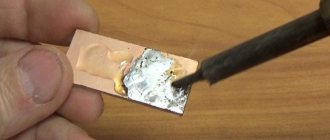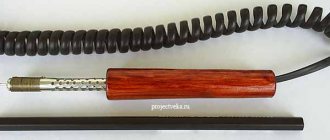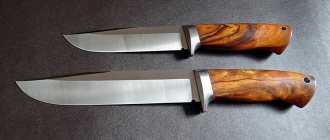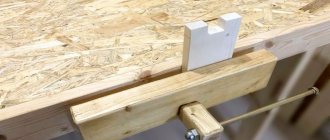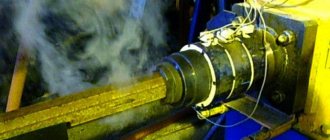Choice
A correctly made choice will help in maximizing the mechanization of agricultural labor.
For less effort when planting potatoes, cutting furrows will be easier with adjustable wings. To hill up plants, it is better to choose a disk option. To get the job done faster, rather than pulling the tool along each row, you need to consider a two-row classification of hillers. If the walk-behind tractor has sufficient power, you can choose four-row equipment. To choose the right hiller, you also need to compare factors such as:
- soil type;
- type of walk-behind tractor;
- dimensions of the site;
- amount possible to spend.
For example, if you plan to process heavy soils, the quality of the steel will be an important parameter. However, a cultivator with low power is unlikely to pull a heavy tool. If you don’t have enough money to buy a quality tool, and you need to cultivate heavy soils, you can turn to craftsmen for help or make the necessary parts yourself. For homemade products, the characteristics of some popular models will be useful.
For example, a two-row hiller has the following parameters:
- dimensions – 450x130x45 mm;
- working width – 300 mm;
- weight – 4.4 kg.
The disc hiller with adjustable width, height and depth has the following maximum parameters:
- width – 70 cm;
- height – 62 cm;
- disc diameter – 37 cm;
- processing depth – 30 cm.
Tips for use
Even if the stages of making the hiller were followed and everything was done correctly, it is important to learn how to use it, properly configure and sharpen the parts. After assembly, the unit is tested on site
The quality of work will depend on the condition of the soil, climate and weather on the day of plowing.
Adjust the mechanism as follows:
- They walk the nozzle along the ground, set the angle of inclination of the elements and the depth of immersion. It should not exceed the total length of the product.
- The device should not throw soil around and worsen the appearance of the furrow.
It is prohibited to use the equipment if animals and children are nearby. Do not use the machine in a faulty condition or leave it unattended.
How to make a potato hiller with your own hands
A manual hiller allows you to plow the soil without the use of machinery. Allows you to process small areas. To make a homemade hiller you will need:
- Discs or sheets of metal as blades – 2 pcs;
- Cam type mechanism – 2 pcs;
- Fixing brackets – 2 pcs;
- Metal stands – 2 pcs;
- Bridge beam;
- The handle is a rower.
Important to remember! A disk hiller differs from a lister hiller not only in the cutting tool, but also in the design of the frame. During manufacturing, it is necessary to set the cutting width of the blades in a practical way.
For disks, the width should be approximately 25 cm, for lister - about 30 cm. This is explained by the nature of the cutting of the blades. The discs plow the soil along a straight path, and the metal sheets are hilled at an angle.
Manufacturing
Making a homemade hiller for a walk-behind tractor is quite simple. First you need to assemble the cutting element. Then weld and attach the frame. The diameter of the cutting discs should be between 370-770 mm. For lister blades, sheet metal measuring 25 x 40 cm is used. The thickness of the blades is selected depending on the power of the walk-behind tractor. For manual plowing or hilling, 2 mm steel is sufficient. With an increase in the number of hillers, the thickness of the metal is increased by 2 mm. This will prevent the blades from deforming under load.
Metal bushings are welded between the finished discs or blades. They will ensure fixation of the cutting edge during hilling. The width of the grip depends on the length of the bushings.
After welding the blades, we move on to making the frame. The length of the structure should not exceed 120 cm. Otherwise, the steering handle will vibrate during operation. The frame for the hiller is made taking into account the attachment to the walk-behind tractor. The lower part is a reinforced structure that secures the tool. When making hand tools, instead of mounting them under the walk-behind tractor, a guide rod is welded.
Variety of models
On the market for agricultural products you can find a manual hiller “Druzhba”. It is equipped with adjustable wings that allow you to change the working width, and the addition of a front iron support wheel. The equipment is controlled by two operators. The dimensions of the product are 55 cm width and 48 cm height. The weight of the unit is 17 kg. It is produced in the city of Cheboksary, and its cost varies from 3,000 to 4,000 rubles.
Another version of the hiller is “Pull-Push”, which is popularly called a hand plow. It is unregulated. The design of the tool allows it to cut furrows, weed weeds, and hill up planted potatoes. The width of the product is 45 cm, and the height is 90 cm (including the handle). The unit weighs 7 kg. It is lightweight due to rubberized handles. The price of the tool is from 1500 rubles. It was produced in Kyiv.
A popular hand-held tool is the “Phenom”. The design provides the ability to work with both two and one operator. The hiller is adjustable both in the height of the handles and in the width of the processed ridge. As an additional tool for the hiller, a flat cutter is offered, which is connected with a handle using ordinary bolts. The dimensions of the product are 16x40x40 cm, and the weight is 10 kg.
Modern manufacturers offer flat cutters. This tool is a bent plate with sharpened edges. Using the equipment, you can remove weeds and loosen the soil. To weed several rows at the same time, several flat cutters are combined on a special hitch. On sale it is called a wide-row weeder.
Among the hand tools for loosening, the Tornado cultivator became famous. It has a simple design, which consists of curved teeth connected to the handle. In relation to the base they are turned counterclockwise. To work with the tool, it is enough to rotate it around its axis in a vertical position.
Characteristics
Any gardener who has potatoes on his plot will most likely need a hiller. This tool is characterized by its versatility and helps you cope with complex work more efficiently. The most common option is a manual hiller. The characteristic features of the product allow you to cut ridges of earth into ridges and carry out pre-emergence and post-emergence treatment. The dimensions of the standard tool are suitable for simultaneous harrowing and hilling of rows in a potato field. Depending on the characteristics of the tool, it is possible to process several rows with plantings at once.
In addition to loosening the soil between the rows, the hiller simultaneously removes weeds. A high-quality tool purchased from the manufacturer has a special device that promotes self-cleaning of adhering dirt. Hillers successfully cope with the task on any type of soil.
Manufacturing
It is not at all necessary to buy this device in a store. We will tell you how to make different types of hillers for a walk-behind tractor with your own hands, including disk ones, based on drawings with dimensions and photos.
Lister hiller
To make a lister type of nozzle with non-adjustable width, we will use the following drawings and diagrams:
Diagram of a lister attachment.
Structural elements:
Lister hiller for walk-behind tractor.
To cut out the wings of the hiller, use the drawing in the picture below:
Template for cutting out halves of the product.
Step-by-step production:
- From sheets of metal 2 mm thick, you need to cut out two identical parts of the working tool using the template above. Next, the halves are bent and fastened together by welding in several approaches.
- The seams must be processed and cleaned.
- It is necessary to weld the base from three-millimeter sheets of metal.
- From sheets of metal 4-5 mm thick you need to make a bracket and a field board.
- You need to make a stand from a thick sheet of metal.
- For a double-row hiller, you can add a width adjustment function using hinge mechanisms. And to control the angle of inclination of the sheets, use rods.
Important! To make the stand, it is necessary to use metal with a thickness of 8 mm. This part of the structure must be very strong and reliable, since the heaviest loads fall on it. Design of a lister hiller
Design of a lister hiller.
Disc hiller
To create this type of attachment for a walk-behind tractor, you will need a drawing:
Drawing of a disk hiller.
Also prepare materials and tools for work:
- welding machine;
- Grinder;
- emery machine;
- electric drill with a set of drills;
- fasteners (bolts, etc.);
- two metal disks with a diameter of about 50-60 cm, steel thickness - about 3 mm;
- metal pipe 1 m long, 2.5 cm wide;
- adjustable adapters;
- screw lanyards – 2 pcs.;
- bracket;
- gas lamp.
Tip: to make discs, craftsmen often use metal lids from kitchen utensils, old discs from agricultural machinery, and even bottoms from gas cylinders.
Disc hiller at work.
Manufacturing process step by step:
- Sharpen the discs around the entire circumference.
- Using a hammer, the disks need to be given the correct shape - convex on one side and depressed on the opposite. It is due to this that they will be able to collect soil.
- It is necessary to make a T-shaped structure from the pipe. To do this, the elements can be fastened by welding or bolts.
- Using welding, it is necessary to connect the T-shaped leader, racks and tarlaps.
- To make a hiller with a fixed pitch, fasten the disks to a width equal to the row spacing. If it is a type with adjustable width, the discs must be secured using adjustable adapters.
- Secure the device to the walk-behind tractor using brackets, a leash, and bolts.
Important! The discs must be fixed strictly symmetrically. At the slightest deviation, the walk-behind tractor will move to the sides, working with it will be very problematic and ineffective. In this video you can watch how to make a disk hiller:
In this video you can watch about making a disk hiller:
Principle of operation
Gardeners know that hilling potatoes should be carried out several times a season. If the soil on the site is well-cultivated and loose, this contributes to a better process of oxygen exchange. The air entering the soil has a positive effect on the development and growth of plants. Timely loosening increases yield by 30–60%. Thanks to the design of the working body of the hiller, furrows with the required depth are obtained. The loosened soil falls off on both sides of the resulting ditch. Tubers are placed in it, and then the grooves are filled with earth. As the potatoes grow, you need to add a thick layer on top. This contributes to the formation of a large number of tubers. This addition is again ensured by loosening with the formation of a groove along the planted seedlings. This is achieved by the fact that the working parts of the hiller, when moving between the rows, cut off the top layer of soil.
In addition to potatoes, other crops that are planted in rows and require hilling, for example, tomatoes, eggplants, and peppers, can be processed with a hiller. Tool designs differ in grip width, manual or mechanized operating principle. The first option is quite primitive, requiring two operators, one of whom takes the front handle, and the other presses on the rear link. As a result of the efforts, the device goes deep into the ground, cuts the soil, and when moving inside the formation, leaves a noticeable trail of earth. The automated version is attached to a tractor or walk-behind tractor and is controlled by one operator.
Manual and automated hillers can be divided into the following types:
disc is a simple tool suitable for one person;
garden plow is a universal plow that requires the presence of two operators.
It is clear that disc options are easier to use; they are also often automated by coupling with motor vehicles. The ridges of the earth after the disc hillers are higher. There is also a negative point in these devices - the price. Compared to a plow hiller, it is four times higher. Externally, the tool looks like a frame with wheels on which disks are suspended. The distance between them can be changed in accordance with the width of the rows. The discs are set at a certain angle, which is not recommended to be adjusted relative to the vertical. Without a constant equal distance between the circles, the tool will pull sideways.
The simplest type of hand plow has a predetermined working width, wings (ploughs) shifted relative to each other, which are motionless. This is convenient if the row spacing has already been determined and the tool fits them. Another advantage of hillers with a fixed working width is the ability to use them with light cultivators weighing up to 30 kg. The advantage lies in its compactness, and the negative side lies in the limited work in wet areas. Here the tool will stick in the soil.
A hiller with variable working width is the most common option. The adjustment mechanism is simple, but it allows you to move or extend the wings, adjusting them to the desired width to the row spacing. The tool can also be automated, but only with heavy walk-behind tractors. The wings of such a hiller push the earth in both directions at once. After the tool passes, the part falls back into the line that it cuts. For a more efficient harrowing process, a more powerful walk-behind tractor is required, otherwise pulling the hiller will seem harder than working with a hoe or hoe.
Operating principle
The device is attached to the motor vehicle on the bracket of the coupling device (hitch), which does not have a bed. This is accomplished by means of a locking component - two screws and a flat washer. More comfortable and high-quality work is performed at the first reduced speed. This will make it possible to increase traction by reducing the forward speed.
The principle of operation of a disc implement for hilling is simple: the discs, when moving, grab the ground and form a roller during the hilling process, covering the vegetation with soil. The movement of the discs makes it possible to further crush the soil and loosen it.
The disk device for hilling has some advantages over its relatives: it builds ridges higher and more level, it is simpler and more interesting to operate, and energy costs are significantly lower. It is easier for an employee with such a device to work.
Of course, not everything is so wonderful. You always have to pay for convenience. And the cost of the disc hiller is proof of this. The cost of using a comfortable and easy-to-use disk device is approximately 3–4 times higher than other types.
The cost of agricultural implements depends on the following characteristics:
- thickness and transverse size of the disks;
- material of manufacture: ordinary metal or alloy steel;
- use of roller bearings or sliding bushings in the structure;
- setting device.
When purchasing a disc implement for hilling, all these points must be taken into account.
Taking into account that this equipment is not cheap, a natural question arises as to whether it is possible to make a homemade disk device for hilling a walk-behind tractor
Do-it-yourself hillers for a walk-behind tractor
Vertical stand
Multifunctionality is a mandatory feature of any device, and therefore you need to pay attention to adjusting the device.
The height can be adjusted using the telescopic device of the central part. The pipe needs to be inserted into a tube that is smaller in cross-section than the other, it goes into the rear link. If you use this method, you can easily adjust the hiller to the gardener’s height level.
Adjustment
Adjustment of the angle of inclination is carried out using a lanyard
The tool bed must be movable. To fulfill this condition, the front link is attached to the main post with a hinge; adjustment is made using a lanyard, which allows you to change the angle of inclination. In the case where there is no lanyard, a metal plate is used, it is fixed in the desired position and secured with bolts.
Welding
The rear link and blades need to be welded to the rack, then the front link is attached. The rear link width is 0.5 meters. Handles - 0.2 meters. A pipe 0.3 meters long is welded to the center of the fork; with this end the structure is inserted into the cavity of the vertical rod.
To adjust the height of the rack, you need to drill out the openings that are located at its upper end. Exactly the same manipulations must be done with a vertical fork. The front and rear links should be identical in width.
Manufacturing of a double moldboard plow
To make a double moldboard plow, you will need plates, each two millimeters thick. They need to be given semicircular bends. Then the process of welding the two halves to the stand is carried out.
Two important aspects of the work: the seam in the place where the parts are joined must be smooth, the plates must be sanded using a grinder.
Double shaft plow
Making a scoring knife
To make a pruning knife, you need to get steel with a high carbon concentration.
Then you should cut out a knife, which should be shaped like an arrowhead, and sharpen it carefully (the angle between the surface and the knife should be 45 degrees)
Why 45? If you grind a knife at this angle, it will not lose its sharpness for a long time. Next, you need to weld the trimming knife to the bottom of the post and grind it.
Discs
First you need to cut 2 plates from a steel sheet, then you should give them the shape of a semicircle. Both disks are fixed on the rack. The weld seam must be smooth.
First, all parts that are to be welded must be ground with a grinder, and the discs must be carefully sharpened. The cutting part takes on almost all the soil resistance.
Drawing of discs for a hiller There is no need to purchase store-bought discs, since the grinder is not capable of sharpening the metal from which they are made.
A hiller is an almost irreplaceable tool that every gardener who respects his time and energy must have.
As for gardening tools, hillers are quite an expensive pleasure that can really help in the household. In any case, even this expensive equipment can be made with your own hands, you only need to know how to use tools and use drawings.
The post How to make a potato hiller with your own hands first appeared About the farm.
Advantages and disadvantages of homemade structures
A homemade potato hiller has the following advantages:
- Availability. Almost every gardener can do it. This does not require special knowledge or any skills. It is enough to understand the basic tools and be able to use them.
- Saving. Ready-made solutions are always more expensive. And taking into account that a person does not pay himself for the work, then we get a free option.
- Performance. A self-made device is not inferior in efficiency to its automated counterparts.
The only drawback is that safety and quality depend only on you. Therefore, do not be lazy to pay due attention to each stage of work, even if it seems insignificant. To obtain a quality product, use the appropriate parts.
Master class: potato hiller
In stores you will find hillers that are designed for agricultural machinery. You will have to make manual models yourself if you want to make it easier to grow vegetables in the country. Hillers are divided into two types:
Drawing with dimensions of a disc hiller for potatoes
The plow is designed in the form of a small plow with long handles, and the disk one is in the form of two disks, narrowed downwards, also with two long handles. The design of such a hiller is pushed forward, and the discs or plow turn out the layer of earth. It is better to work with these devices together. Experienced gardeners advise using a disc hiller, because... it forms better and more accurate land swaths.
Types of hillers
Manual
Manual hillers (disc) are designed for loosening and hilling. The use of such a tool can guarantee high-quality tillage.
This tool can help the gardener carry out hilling and will avoid energy-consuming and tedious work.
The cost depends on the configuration. On average, a device with two disks costs around 2,500 rubles. The cost of a manual hiller is about 2.5 thousand rubles
To the tractor
They are used for automated processing. The device is capable of immediately removing weeds from the cultivated area and, in fact, successfully hilling the tubers. After manipulating the tractor hiller, the potato yield level increases sharply.
They consist of: a metal frame, an attachment that is responsible for the coupling, two stamped wheels, iron pointed paws and dumps.
The load on the hiller is reduced by tractor wheels, in turn, the paws cut the soil (up to fifteen centimeters). A steel support attaches the legs to the frame. Lattice dumps are used for hilling.
Basically, tractor ones can be attached exclusively to the T-25 tractor, which has a rather small traction force, unlike the MTZ. It is not able to work with a device that has more than 3 cases.
If the gardener’s goal is to simply hill up the potatoes, then he needs to unscrew the pointed paws.
The cost of tractor potato hillers varies from 20,000 to 30,000 rubles. Hiller for tractor T-25
To the walk-behind tractor
The device is installed on the walk-behind tractor in place of the coulter.
How it works: during transitions between rows, the device pours soil with its wings directly onto the tubers. You can attach a disc hiller to the walk-behind tractor.
In fact, “hillers for walk-behind tractors” are not a separate species. We used this to let you know that the device can also be mounted on a tiller.
Disc hiller for walk-behind tractor
Plow
The potato hilling plow is designed to facilitate the work associated with growing potatoes. With the help of such a plow, furrows and beds are cut, the soil is loosened, crops are planted, and hilling is done.
In terms of its configuration and mechanism of action, the plow is similar to a disk hiller. At least their mechanism of action is absolutely identical.
Plow
Hilling process
The process itself is a treatment between rows of potatoes, when soil is raked onto the stem on both sides, forming a mound. The higher the bush is hilled, the greater the harvest will be. For this process, many devices are used, ranging from a hoe to a tractor. For small home garden beds, a hand tiller will be sufficient. Another option is an electric hiller, namely a walk-behind tractor, but only if the bed is large.
There is no need to rush right away; first you need to understand how the hiller works. Having reached the end of the row, they turn the hiller and return along the new row spacing. All potatoes are processed this way.
Important! The hiller must pass clearly in the center of the row, otherwise there is a risk of damaging the potato stems.
DIY making
The stages of work are as follows:
1. Adjustment. It is best for a homemade hiller to be multifunctional. For this reason, it is worth taking regulatory functions seriously. The height is adjusted using a special telescopic device located in the central part. A smaller diameter tube is inserted into the larger tube and goes into the rear linkage. Thanks to this, the hiller can be adjusted to suit a person’s height.
2. Control of the attacking angle is ensured by tilting the stance in the center. This effect can be obtained by changing the difference in angle between the vertical bed and the front link.
There is an interesting article on how to use metal xenon.
If you are interested in how to make a table for a hand router, then read more about this in our article.
3. Next, the bed is set in motion. The front link must be attached with a hinge to the rack in the central part. Regulation is made using a turntable.
4 We weld the rear struts and discs to the rack.
5. Then attach the front link using a hinge mechanism and a long bolt.
6. The result should be a rear link in the shape of the letter “P” with a width of no more than 50 cm. The length of the handle should be at least 20 cm.
7. Next, a vertical tube should be welded in the central part of the fork. Due to the end of this tube, the entire structure is inserted into the vertical rod.
8. In order to be able to adjust the height of the stand, openings should be drilled in the upper part. The same holes should be made in the vertical fork.
Don't forget: before installing the discs, they should be cleaned from all edges. If you choose covers as disks, then they should also be bent with a hammer: on one side there should be a concave appearance, on the other - convex.
Thus, we have completed the assembly of the hiller. All that remains is to try it out at the dacha. A manual hiller is a convenient tool that can make the work of hilling potatoes much easier. It may seem to some that it is quite difficult to make this instrument with your own hands, but this is far from the case.
The most important thing is to have drawings and good ingenuity, then everything will work out. In addition, making your own does not require expensive tools - everything can be found at home.
Below, we invite you to watch a video on how to work with a manual potato hiller:
How to make a hand-held garden auger with your own hands: video instructions and manufacturing drawings
How to make a trailer for a walk-behind tractor with your own hands: drawings and assembly recommendations
Do-it-yourself diesel fuel drip stove: design features, manufacturing technology and video recommendations for assembly
Do-it-yourself hiller for walk-behind tractor - video drawings
Reviews
A device for hilling potatoes is very popular among summer residents, and especially if it is made with your own hands. Numerous reviews prove this. Let's present you some of them:
“A homemade potato hiller is probably the best thing we have among all the gardening devices. This design saves so much effort and time. Previously, they even wanted to give up having a vegetable garden, because it requires a lot of dedication. A neighbor recommended a hiller to us. Accordingly, they wanted to buy it, but my husband made it himself. They also added a special belt, so now it’s generally comfortable to work with. From practice: this year we got 2 times more harvest than last year, when we used a hoe and, accordingly, did this work in bad faith.”
“I never thought that a potato hiller would bring me so much joy! We discovered this device recently, which we regret: how much time we could have saved. Our vegetable garden is very large; we had to ask our children and grandchildren to do all the work, because we couldn’t do it ourselves. Now we have solved at least one problem - hilling potatoes, which was very difficult if you used a shovel or hoe. We looked at how to make a homemade potato hiller and the next day we tested our invention. It seems to me that our mechanism is even better than the store-bought one. We designed it taking into account our own characteristics.”
I can’t imagine how we managed before without such a structure. A manual plow for hilling potatoes significantly saves time and effort. Of course, there are many outstanding inventions in the world, but for summer residents and gardeners this mechanism is probably the best thing that has been invented in recent years. There is a lot of equipment on the market for professional use, which costs accordingly. And you can make a tool for hilling potatoes yourself, which is what we did. For the second season we can’t do without him. The last time I noticed good progression in increasing the yield.
Remember that a manual potato hiller must be of high quality. Therefore, carry out all stages of work conscientiously and do not forget to select good parts and materials.
How to choose and make a potato hiller with your own hands?
One of the most popular agricultural crops is potatoes; they are grown here and in Eastern European countries. In the process of many years of growing potatoes, various agronomic technologies were created.
They helped to facilitate crop processing and also increase yield. On an industrial scale, the crop is grown using a tractor with attachments - cultivators, and on personal plots, potato hillers are used for a walk-behind tractor, which you can make with your own hands.
Using a harrow for weeding
A mesh harrow is a frame with blunt teeth designed for harrowing ridge plantings of potatoes.
The device is attached to the walk-behind tractor. Due to the inclination of the cells at 45º and the distance between the teeth of about 20 cm, it is possible to carefully lift the soil between the rows. Along with it, weeds turn up to the surface and dry out in the sun.
Using this method, using a mesh harrow and a walk-behind tractor, it is possible to weed a large area of a potato field.
Using a mesh harrow for a walk-behind tractor
Manual hiller for potatoes. Homemade manual hiller from a bicycle
It is very difficult to hill up potatoes and beds with your own hands, but a homemade hiller makes life much easier for the farmer. The scheme for creating the unit is very simple.
Operating principle
The key part of a manual hiller is the cultivator or plow. It is he who will do what is done manually with a hoe or hoe - plow the soil. This plow, using its sharp end (“nose”), digs slightly into the soil and distributes it on its sides, covering the potato rows with soil.
If the hiller is a homemade model made from a bicycle, then the cultivator will be mounted on its frame. By slightly changing the structure of the unit, grabbing the steering wheel, you can control the device, directing it in the desired direction. The movement of the hiller itself is carried out due to a single wheel in the front part of the frame.
The essence of the work of a manual hiller can be summarized more briefly using the following algorithm:
- the cultivator crashes into the ground;
- the operator of the apparatus, using the steering wheel, directs the hiller in the desired direction and moves it forward;
- movement is carried out due to the existing wheel.
What is needed to create a hiller?
First of all, you will need certain equipment and materials:
- frame of an unnecessary bicycle (necessarily with a handlebar and one wheel 26-28 inches);
- welding fixtures;
- wrenches for nuts and bolts (if the cultivator will be screwed to the mount).
At the same time, you will need a little patience and the ability to work with a welding machine.
Preliminary actions
To begin with, prepare the bicycle frame: handlebars, saddle, pedals, and remove the rear wheel. The second wheel is disassembled and cleaned - only a metal rim is needed.
The metal rim penetrates the soil better, which is why the hiller will gain much greater stability and maneuverability than with rubber. Operating such a unit will become much easier.
The process of creating a hiller
The manufacturing process can be divided into 5 stages:
- The mount on the rear wheel is cut so that in the end there is only a “triangle” from the bicycle frame.
- The cultivator will be placed instead of the wheel, and it must be fixed there.
- Screw or weld the cultivator.
This should be done efficiently, because this part of the hiller will bear the greatest load. If the cultivator will be screwed on, then tighten the nuts as tightly as possible, otherwise the manual hiller will not last even a couple of days. This is where both nut and bolt wrenches come in handy. By operating them simultaneously, you will be able to secure the parts firmly and for a long time. - Next, the offset of the cultivator is adjusted (how far/close it is). This is done for the purpose of convenience during the hilling process, so as not to trip over the cultivator blades.
- The previously removed steering wheel is tightly twisted in place of the saddle.
Creation of a cultivator section
Creating a basic cultivator is quite simple. In fact, this is the same plow. Two plates are attached near the base, which form an angle directed forward (towards the wheel). As the hiller moves, the plates will divide the soil into 2 parts and hill up the potato rows with the raised soil.
However, the following requirements for this part should be adhered to:
- the total width of the blades should be equal to 2/3 of the row spacing of the potato bushes;
- the cultivator should go 10-15 cm underground;
- The angle of the blades should be close to 90 degrees - this way they will perfectly pick up the soil.
After carrying out a full range of work, you should end up with a full-fledged manual hiller that does its job perfectly while growing potatoes.
To familiarize yourself with the device in more detail and understand how to properly make such a homemade hiller, you can see the following
Useful tips
If you operate the hiller together, the hilling process will be significantly simplified and the efficiency of the work done will significantly increase. To operate a manual hiller in pairs, you need to attach a regular belt to the front of the unit.
You can attach some kind of weight to the back. This improves penetration into the ground, which, again, increases work efficiency. But at the same time, it will be more difficult for such a unit to move forward due to the increase in mass.
From a bicycle wheel and fork
If you have a front bicycle fork and a wheel for it, then you can create a hiller using the following technology:
- 2 pipes need to be welded at an obtuse angle;
- a bicycle handlebar is attached to a long pipe (it would be wiser to weld it so that it does not fall off during operation);
- A cultivator is attached/welded to the junction of both pipes, below.
The final output will look like this:
Creating such a hiller is much simpler than the one mentioned earlier. However, different types of units should be used for different purposes.
Firework
The second place in popularity is occupied by the Salyut walk-behind tractor with a power of 6.5 hp. To plant potatoes, you need to have, in addition to the unit, an additional plow, a hiller, and, above all, devices for adhesion to the ground.
Planting potatoes with a Salyut walk-behind tractor fundamentally looks like this: the mechanism moves in one direction and cuts a furrow for planting seed material, the same unit returns back and covers the furrow with soil.
The peculiarity of the walk-behind tractor is expressed in the selection of appropriate attachments.
MTZ walk-behind tractors came to us from the Soviet Minsk Tractor Plant, they are still popular today and are in demand among the Russian population.
An agricultural machine of minimal size turns out to be multifunctional and universal. It fulfills its purpose well.
The model has disadvantages:
Each business owner purchases equipment based on considerations of cost and expediency. Requirements for agricultural practices do not change.
Let's look at the features of each of them.
Lister with fixed and adjustable angle
They have a fixed soil width and are used on very light motor cultivators with a power of up to 4 horsepower. Capable of cultivating beds measuring 25-30 centimeters in width, they are equipped with two side wings and a thin stand. The stand protects the equipment from overloads and mechanical damage. This tool can only be used on dry soils, since adhered soil will interfere with the operation of moving structural elements. There are lister devices with adjustable tillage width. They are installed on motorcycles with higher power – from 4 horsepower. Such units can be safely used on wet soil.
Propeller
The principle of operation is the activity of the propeller parts. Under their influence, the soil is first dug up and weeds are removed, and only then the beds are loosened. These modifications are mainly practiced for motor cultivators with front-wheel drive and two speeds. This is due to the fact that at second speed the power increases to 180 rpm. Once the power level reaches its maximum, this implement can be used not only for hilling soil, but also for throwing soil into furrows from the space between rows of plantings.
Double (2-row)
It cuts two furrows before planting crops, and is also used for hilling and loosening the soil. Includes a frame on which 2 hillers are fixed. When cultivating land, it significantly saves time, since it has two working elements. Mounted on a walk-behind tractor using a hitch. Due to the fact that such a device requires a lot of resistance to operate, it is used in conjunction with lugs.
Rotary active
Instead of wheels, this implement is equipped with rotors with screw-type teeth. Demonstrates high performance when creating, loosening and hilling potatoes. Suitable for use with 3-speed units (two forward and one reverse). In the first gear, the implement hills up the plantings, and in the second gear it also removes the soil from the space between the rows of plantings.
Single row
The most common type. Suitable for use with light soil types. Cutting ditches is carried out after completion of the preparatory loosening of the soil using a cultivator.


